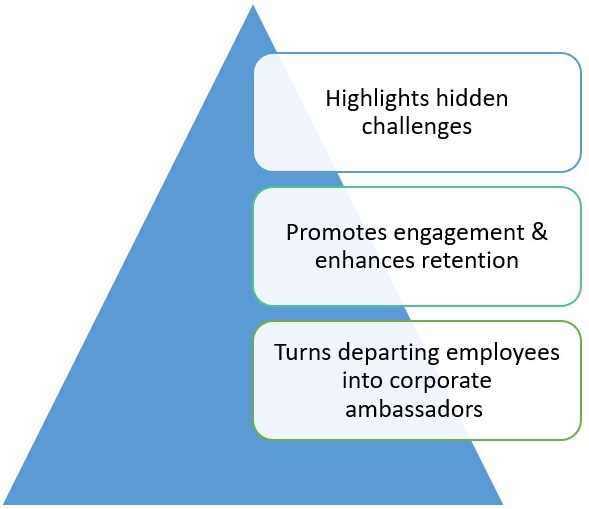7 Successful Employee Retention Strategies
In our previous article, we talked about why employee retention is important for an organization. But what exactly do you need to do to retain employees? How to cope up with the employee retention battle? What to do to keep your best talent from losing in a competitive job market? We list out the best employee retention strategies which will help organizations with the “how” and “what to do” part now.
Mentorship programs
Attaching new employees with mentors is one of the best employee retention strategies. It can be a good component to the extended process of successful onboarding. Mentorship or buddy programs can offer time-to-time guidance to new employees wherein they can pick ropes from established employees. In return, these new employees can offer innovative and fresh ideas to an organization. However, mentorship programs or buddy systems shouldn’t remain confined to new employees. Existing staff must be checked for retention outlook, job satisfaction and career advancement.
Find the ideal P/N Ratio for Feedback
P/N ratio is the positivity to negativity (P/N) metric. Modern workplaces are often torn between what works best for team performance and employee retention? Positive feedback, constructive criticism, a harsh wake-up call- what is it that accounts for the most effective employee retention strategy? Marcial Losada and Emily Heaphy in their research surveyed 60 different strategic-business-unit leadership teams. One of the “effectiveness” parameters was 360-degree feedback ratings of members in the team. Positive comments such as “that sounds like an idea to me,” “I agree with you,” tend to motivate people in the right direction. Negative comments appear like disparaging or sarcastic remarks over employees’ work. But, negative feedback is also an essential part of the mix, says another research. It has also been observed that people receiving most negative feedback also had higher room to grow.
So how should firms find the ideal P/N ratio? Majority of the leaders in the latter research agree that it is more of the positive feedback that can motivate employees towards continuous improvement and retention within a firm. So the optimal P/N ratio, on the basis of two studies, can be defined as 5 positive comments to each negative one.
Offering financial stability and competitive compensation benefits
A Glassdoor survey conducted among 750 hiring managers found that as high as 45% of the employees quit a firm citing salary as the top reason. This is followed by career advancing opportunities and compensation & benefits. In fact, 35% of the hiring decision makers are already expecting that their employees will quit in the next 12 months! Paying below what the industry standards are, compels employees to take better opportunities. The employees look for financial stability when they join a business. Reviewing the existing wages and making adjustments according to the industry standards is among the best practice employee retention strategies.
Fostering a system of three Rs
Respect, Recognition and Rewards - are among the top three things that can retain employees within an organization.

Respect can be fostered within an organization by encouraging creativity, constructive criticism in a language that doesn’t appear reproachful, transparent leadership communication, and making them feel valued.
Rewards and recognition are crucial aspects and among the top talent retention strategies. Building compelling recognition programs, having quarterly employee spotlight awards, highlighting successes formally in meetings, celebrating key milestones, and declaring employee of the year rewards are just a few compelling programs to name.
Career growth opportunity through training and development
Innovative employee retention strategies require businesses to work on providing career growth opportunities to employees. When an organization provides growth in career through promotion, better job designation, training and development, providing new competencies and tuition reimbursement, employees feel motivated within a firm. Succession planning of employees, giving them a breather in form of time to attend professional courses and webinars will definitely provide an excellent employee experience and enduring employee retention.
Encouraging an equilibrium for work-life
A report shows a detailed work-life balance story for each country, but the crux is that when employees work for longer durations, it jeopardizes their safety, hampers personal life and increases stress. There is less time to spend on leisure, personal care and other activities. Organizations, in the wake of already stressful times, must identify the folks who remain overworked or work for longer hours. Giving them time off, asking for a break, having one-on-one out-of-business conversations, and evaluating work schedules of a business can encourage healthy work-life balance for employees.
Focusing on exit interviews equally well
Having well-planned exit-interviews are as important as the hiring interviews. Unfortunately, exit interviews are absolutely underused within organizations. But they can be used extensively to collect internal data and prepare a futuristic strategy to retain employees. Thoughtful exit interview works in three ways as explained in the diagram below.

Increasing job satisfaction and providing excellent employee experience is the only way to ensure that your best team members stay put. It is evident for some employees to leave the firm, but if they’re valued within an organization they’ll continue to build a brand value for your business. Implementing efficient and effective employee retention policy is a way to have a great team, and an even better organization alumni.




